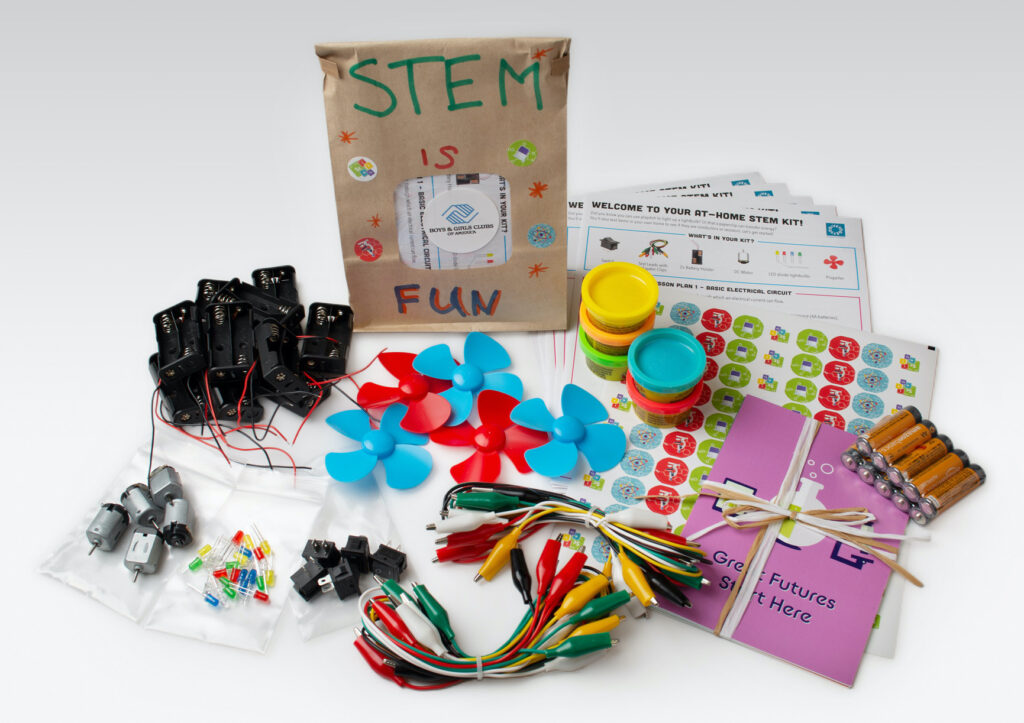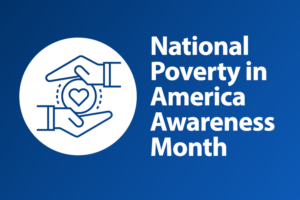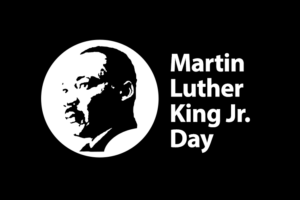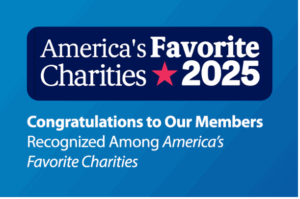Sarah Ford | December 13, 2021
Volunteer Experiences that Impassion Employees and Create Meaningful Impact
“Do you want to build a robot?” That’s the question America’s Charities and Give To Get posed to a small group of HR, CSR, and employee giving coordinators who we invited to test-drive a virtual volunteering experience.
While many companies are finally filling office buildings once again, the reality is that remote and hybrid work arrangements are here to stay for the foreseeable future. For companies committed to helping the community through employee giving programs – particularly volunteering – this means evolving and innovating HOW those programs operate.
America’s Charities and Give To Get have co-hosted a couple of webinars to help employers manage volunteer events that are inclusive of employees regardless of whether they work remotely, in person, or a hybrid of both. Through the robot-building test-drive event we hosted, we were able to take those webinars one step further by letting the group we invited experience a virtual volunteer event firsthand.
 Holly Manuel, Leadership and Community Development Program Manager at United Community Bank, was one of the individuals we invited to participate in our event.
Holly Manuel, Leadership and Community Development Program Manager at United Community Bank, was one of the individuals we invited to participate in our event.
“United is committed to employee development and fostering a strong culture. One of our most critical measures of success is to be a great place to work for great people. That is why we partnered with America’s Charities earlier this year to establish our Here For U Employee Assistance Fund. It’s important that we are there for our teammates to help them cope with unexpected financial hardships that place undue stress on them and their family,” stated Manuel. “United’s commitment to fostering a strong culture also extends into the local communities we serve. We believe in the power of coming together for good. For that reason, our team is always thinking about meaningful ways we can engage our team in giving back to the community. I thoroughly enjoyed the robot build activity. It was an innovative approach to virtual volunteering that promoted teamwork and focuses on youth development. I look forward to exploring the possibility of offering a similar opportunity at United. Thank you for inviting me to participate. I hope my robot and words of encouragement inspire a student to pursue a career in the STEM fields,” shared Manuel.
The feedback we have received from other participants has been nothing but positive, and many of those in attendance are now noodling how and when they can do something similar with their colleagues.
For those of you who weren’t able to join our intimate gathering – well you are the reason why I’m sharing this post. Having participated in the event myself – as an event coordinator and participant – I thought I’d share my experience with you to give you a taste of how it all works and maybe even inspire you to give it a try yourself.
(1.) Select a Cause that Aligns With Your Goals and Meets Your Nonprofit Partner’s Needs
After our teams at Give To Get and America’s Charities came up with the concept of this test-drive volunteer experience, the first thing we had to do was the same thing your company would have to do if you were to coordinate an employee volunteer experience like this: decide who your volunteer event will help.
It sounds easy enough, but there are quite a few things to deliberate, such as:
- When do you want your event to happen?
- Who do you want to participate in your event and what kind of interests and skills do they have to contribute?
- Will your event include employees in multiple locations and regions across the United States, more than one country, or a specific local community?
- Does your company have any core causes that the volunteer event needs to align with?
- Are there any national events, movements, or seasons and holidays coinciding with the timing of your event that might influence what type of cause or need your event will address?
- Do you already have established relationships with some nonprofit partners? What do they need help with the most right now?
This is by no means an exhaustive list of things to consider (for that I encourage you to check out some of our helpful volunteer guides), but these are some examples of the types of questions we asked ourselves when we planned our event. Based on the factors that were important to us, we ended up teaming up with Girls Inc. of the Washington, D.C. Metropolitan Area and ultimately ended up with the fun focus of the event – building robots!
(2.) Plan and Promote Your Volunteer Event
After you decide who your event will help, next you will need to choose what type of activities or experiences your event will encompass. For many professionals, that can actually be one of the most daunting parts of coordinating a volunteer event. But the truth is you don’t have to come up with the ideas – you should look to your partners for help with that. Schedule time to speak with the nonprofit partner(s) who will benefit from your event. This will help you understand their most critical needs and oftentimes nonprofits will already have a program and creative ideas ready to help you address their needs. Working with a partner like Give To Get not only can help your team select the right nonprofit partner, but they are experts in crafting volunteer experiences designed to address community needs that meet your company’s specific social impact and employee engagement goals – just take a look at any number of these examples of companies they have helped.
For our test-drive event, Give To Get took lead on event logistics, coordinating with Girls Inc. and developing the robot-building activity. What I loved about our event was how Girls Inc. was included on the day of the event. Too often, despite a coordinator’s best intentions, employees participating in a volunteer event can miss out on the important connection of HOW what they are doing will actually help someone. That connection is critical when it comes to providing employees with a positive experience and getting them to participate again in future events. Sydney Wilson, Program Director at Girls Inc. D.C, was invited to speak with participants at our event to share how the robots we were building would be used. In our case, the robots would be used to give students hands-on STEM learning opportunities like coding and inspire girls to gain confidence and interest in STEM-related fields. Included in the robot-building kit each participant received (more about that below) was a card. Each participant was asked to write a note of encouragement in the card, which would be passed along to the young girls using the robots at Girls Inc. I’ve written notes of encouragement to individuals at other nonprofits I’ve supported and have even received written correspondence back from some of them. There is nothing better than making that personal connection with the individuals you are helping. Making that connection in person is not always an option depending on the type of volunteer work or cause involved, so don’t underestimate the power of something as simple as a handwritten note.
When it came to promoting the test-drive event, America’s Charities took lead. We have more than 40 years of experience inspiring employees and organizations to support each other and causes they care about. In addition to providing clients with the employee giving and CSR technology to facilitate their programs, we provide full guidance and service, including help with things like messaging, design, and ideas for promoting event participation using the client’s unique set of employee communication tools as well as those that are built-in to the employee giving solution they are using.
(3.) Host Your Event
 If you promote your event well, not only will you have a strong turnout, but participants will arrive to your event feeling prepared and excited to volunteer. Leading up to our robot-building event, we made sure to clearly communicate with participants what they should expect before and during the event – and that included details about when they would receive their volunteer kit and what would be included. After we finalized our list of participants, Give To Get’s team put together the robot-building kits and mailed them to each participant so that everyone would have what they needed well ahead of the event. In addition to sharing details about the volunteer kit, we also made sure all participants received the necessary logistical information – since this event was entirely virtual, that entailed video conference and dial-in information prior to the event. We sent those details via an email as well as a separate calendar invite, and reminded everyone to call in a few minutes early to in case of any technical issues.
If you promote your event well, not only will you have a strong turnout, but participants will arrive to your event feeling prepared and excited to volunteer. Leading up to our robot-building event, we made sure to clearly communicate with participants what they should expect before and during the event – and that included details about when they would receive their volunteer kit and what would be included. After we finalized our list of participants, Give To Get’s team put together the robot-building kits and mailed them to each participant so that everyone would have what they needed well ahead of the event. In addition to sharing details about the volunteer kit, we also made sure all participants received the necessary logistical information – since this event was entirely virtual, that entailed video conference and dial-in information prior to the event. We sent those details via an email as well as a separate calendar invite, and reminded everyone to call in a few minutes early to in case of any technical issues.
We kicked off our virtual event with a presentation from Girls Inc. to connect everyone with their mission and to explain how we would all be helping students explore STEM with the robots we were building. And then we got right to it! Hannah Urano, Senior Manager, Social Impact Programs at Give To Get provided an overview of the various components included in the volunteer kit and walked us through each step for building the robots. While our event was virtual, we all had our video cameras on and were speaking with one another throughout the event so it still offered that feeling of togetherness even though we weren’t all in the same room (or same state/country for that matter).
After the event ended, I wrote my note of encouragement to include in the box with the robot I built. Give To Get included a preprinted shipping label, so between being able to use the same box that the robot-building kit arrived in and that shipping label, they made it hassle-free for me to get the robot from my office to the students at Girls Inc. DC’s location.
(4.) Celebrate Success! Share Experiences and Report Results
 After you complete a volunteer event with your team, remember to close the loop and remind participants about the steps you would like them to take next. In our case, there were two primary objectives our follow up communication with event participants included: (1) making sure they knew how and where to return their robots; and (2) information on how each participant can involve their own organization’s employees in a similar type of volunteer event.
After you complete a volunteer event with your team, remember to close the loop and remind participants about the steps you would like them to take next. In our case, there were two primary objectives our follow up communication with event participants included: (1) making sure they knew how and where to return their robots; and (2) information on how each participant can involve their own organization’s employees in a similar type of volunteer event.
The action items you share with employees after a volunteer event will ultimately depend on your organization’s unique community impact and employee engagement goals. For instance, if you use an employee giving platform like America’s Charities Engage CSR solution, you could ask employees to use the “Event Story” feature, which allows them to upload a photo they took from the volunteer event and share their volunteer experience with colleagues. This type of storytelling helps inspire other employees to get involved in your company’s employee giving and volunteer program.
If your company has a Dollars for Doers volunteer service grant program where you donate money to charities based on employee volunteer hours, or if your company offers employees paid time off to volunteer, make sure your event follow up communication includes directions reminding them of any actions they may need to take such as logging into your employee giving platform to submit volunteer hours or how to claim the company’s volunteer grant.
If one of your company’s goals is to increase charitable fundraising, you could invite employees to amplify their volunteer impact by donating through your organization’s giving platform. One of the six top trends uncovered in America’s Charities’ Snapshot Employer Research is that employee giving and volunteer programs serve as an on-ramp to full employee engagement.
Regardless of what your organization’s goals are, you’ll want to make sure you are tracking and recording results, using your employee volunteer platform. If you aren’t sure exactly what to track or how to translate your goals into measurable results, a partner like America’s Charities can help you with strategy creation, benchmarking, and program analysis and alignment.
Lastly, don’t forget to let employees know how their volunteerism made an impact. When I say “impact” I don’t mean the standard units of measurement your company might be tracking like dollars granted, matched, raised, or hours volunteered. Those metrics definitely are important and play a role with regards to monitoring your organization’s progress towards achieving company goals, but when it comes to communicating impact think in terms of the outcomes you ultimately want to accomplish as a result of your volunteerism.
Here’s an example framework to give you a starting point:
[# of hours volunteered or # of employees who volunteered] helps [charity name] provide [service or item supplied] to [#of constituents] [constituent being helped (i.e. women, dogs, homeless, kids)], enabling [constituent] to [what will constituent be able to do as a result].
That’s a lot of blanks to fill, I know. So let’s apply this framework using our robot-building event:
Thanks to the 14 CSR professionals who volunteered between 14-28 hours total (an estimated monetary value of $400-$800 according to Independent Sector), we were able to provide Girls Inc. of the Washington, D.C. Metropolitan Area with 14 robot-building kits that will help young girls explore STEM concepts, including robotics and coding. Students will have access to extensive online resources to explore additional activities, functions, and curriculums. Since the robots are re-codable, Girls Inc. will be able to reuse the 14 kits with even more girls they serve through their program. According to a recent impact study comparing Girls Inc. girls with their peers who do not participate in Girls Inc. programming, Girls Inc. girls had consistently higher mathematics achievement test scores; had higher school-day attendance rates; and reported that they were more excited about science, were more engaged in school, and could handle harder reading than the comparison group of girls. Not only will the robots our group of volunteers made contribute to the physical and mental well-being, academic achievement, and the development of leadership skills for Girls Inc. students, but it will set them up for life-long success and encourage more girls to fill STEM career roles.
Not all nonprofits will have an impact study like the one I referenced above, but if you start with a similar framework and look to your nonprofit partner for resources and answers for any specific outcomes you have in mind, coming up with your impact statement won’t be quite as daunting. Putting together an impact narrative like this will also contribute to your employees’ overall engagement in your program, making it easier for you to promote and grow your program moving forward.
Charting Your Employee Volunteer Program Roadmap
Employee giving and engagement programs are not meant to be static. They should be an ever-changing part of your company culture that evolves along with your business, the desires of your employees, and the needs of the community. The pandemic forced many employers to take stock and examine how they are helping the community and their employees. As such, new innovations – especially in employee volunteering – have developed out of necessity, and the result has been a flowering of fresh ways to engage employees and communities that are here to stay.
Whether your company has more than a decade of employee volunteer experience or wants to start a program from scratch, employee volunteer and skills giving programs can help build your nonprofit partner’s capacity and meet some of their most urgent needs, as well as address some of your organization’s internal goals related to things like recruiting and retention, employee satisfaction, leadership and skill development, brand value, innovation, community relationships, and more.
When it comes to holding an employee volunteer event or rolling out an entirely new volunteer program, think through the steps outlined above and how partners like America’s Charities and Give To Get can help you yield more powerful and meaningful employee volunteer experiences.

Get Resources and Insights Straight To Your Inbox
Explore More Articles
Congratulations to Our Members Recognized Among America’s Favorite Charities
Each year, The Chronicle of Philanthropy releases its list of America’s Favorite Charities—the 100 nonprofits that raise the most from individual donors, foundations, and corporate…
Read ArticleGet Resources and Insights Straight To Your Inbox
Receive our monthly/bi-monthly newsletter filled with information about causes, nonprofit impact, and topics important for corporate social responsibility and employee engagement professionals, including disaster response, workplace giving, matching gifts, employee assistance funds, volunteering, scholarship award program management, grantmaking, and other philanthropic initiatives.




